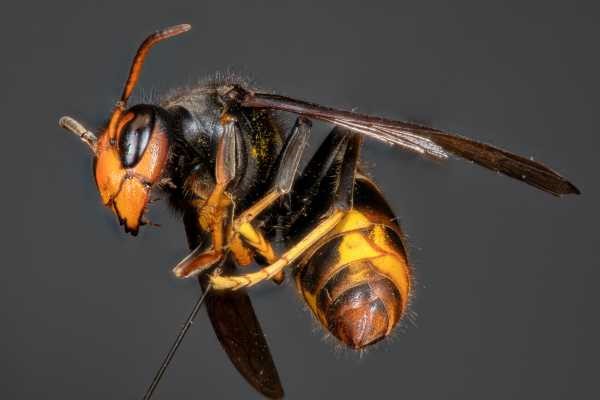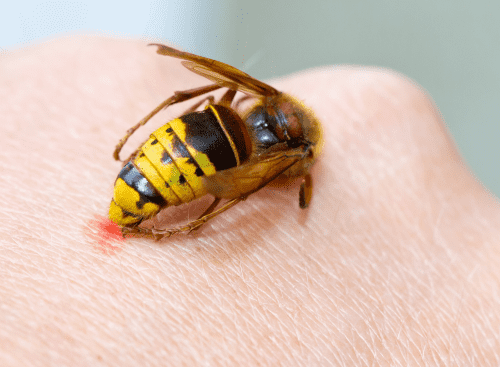What's The Difference Between Bees, Wasps And Hornets?
Bees, wasps and hornets belong to the insect order hymenoptera. Whilst some species are relatively easy to tell apart, some are actually quite similar (as we'll see below).
It should also be said that there are always exceptions to the general rule, however, here are some key differences for most species:
3 key differences between bees, wasps and hornets
1. Feeding
A key difference between hornets,
wasps and bees is in the diet fed to the young.
In order to feed the young, wasps and hornets are predators of other insects.
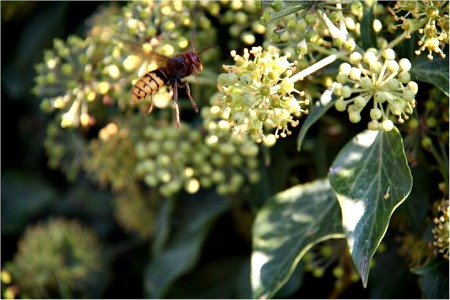 European hornet - Vespa crabro.
European hornet - Vespa crabro.Whereas wasps and hornets provide a carnivorous diet to their offspring
(in the form of other insects), bees feed their offspring on nectar and
pollen.
Bees basically therefore, have a vegetarian diet. According to 'Bees Of The World', an exception to this is a small group of meliponine bees of the genus Trigona, which also feed their young on other insects instead of pollen.
Research has found these bees may also consume other forms of meat if available. However, the bees are usually scavengers rather than killing their own prey as wasps and hornets do.
2. Pollen collecting
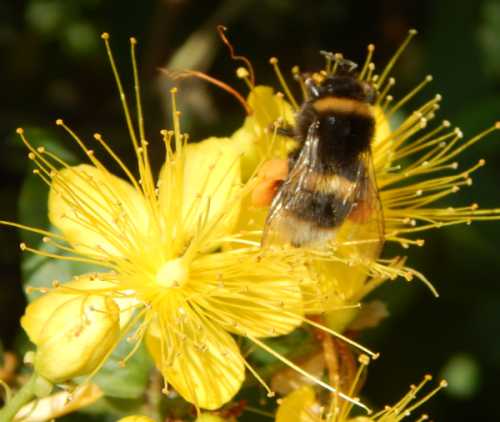
Whereas pollen is collected by bees, wasps and hornets do not collect pollen (or oils), and therefore, females of wasps and hornets do not possess any specially modified pollen collecting hairs.
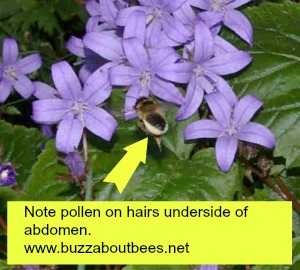
3. Legs
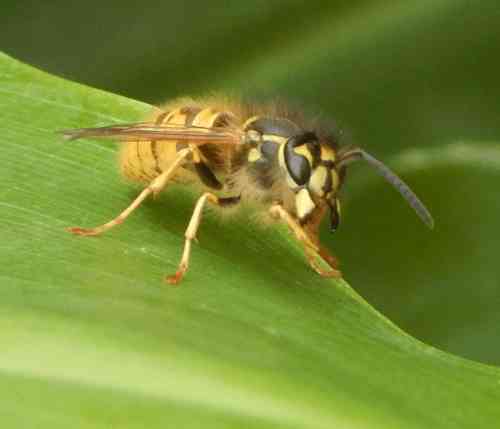 Wasps have long thin legs.
Wasps have long thin legs.
Many bee species have stout legs with relatively few spines, whereas wasps and hornets have long thin legs with spines.
Bees can be mistaken for wasps and vice versa
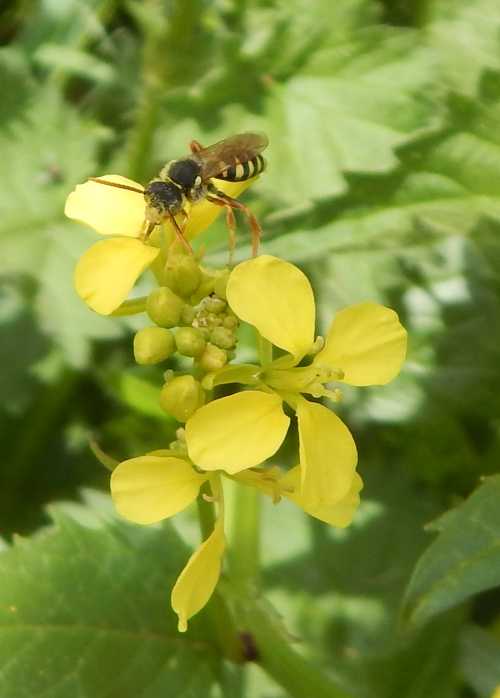 Gooden's nomad bee - Nomada goodeniana.
Gooden's nomad bee - Nomada goodeniana.Nomada bees (like this one pictured above) have a very waspish appearance, both in their colouring and slender bodies, not at all like the cuddly image we may have of bees.
Yellow-face bees are also rather wasp-like.
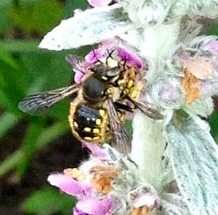 Wool carder bee
Wool carder beeThis wool
carder bee could, at first glance, be mistaken for a wasp, and in my experience, during talks about bees, audience members may mis-identify honey bees, believing them to be wasps. This is partly because their image of a honey bee actually conforms to the physical appearance of a bumble bee.
Sometimes it is simply a matter of practice and familiarity that helps us eventually distinguish them from each other, when out in the field.
If you found this page helpful or interesting, I'd really be grateful if you would share it with others - if not this page, perhaps another, such as Gardening For Bees.
Thank you so much :) .
